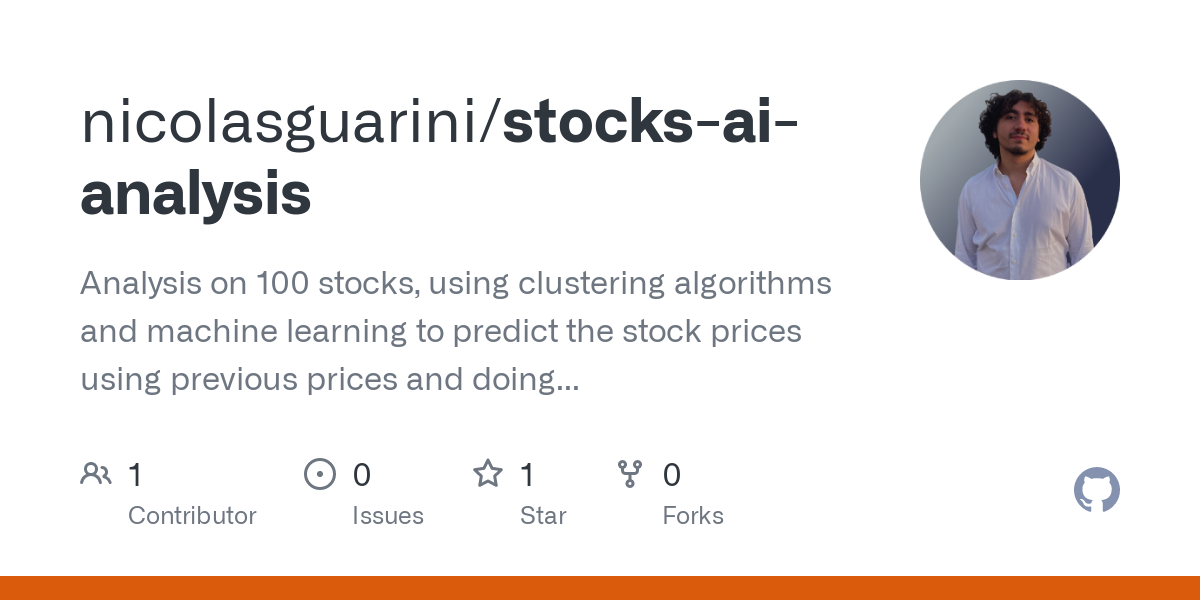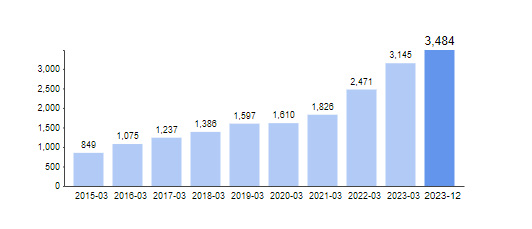20 Top Tips For Picking Best Ai copyright
Wiki Article
Top 10 Suggestions For Diversifying Data Sources For Trading Ai Stocks, From Penny Stocks To copyright
Diversifying your data sources will assist you in developing AI strategies for trading stocks which are efficient on penny stocks as as copyright markets. Here are 10 top AI trading tips for integrating and diversifying your data sources:
1. Make use of multiple feeds from the financial markets.
TIP: Collect a variety of financial data sources, including copyright exchanges, stock markets, OTC platforms and other OTC platforms.
Penny Stocks: Nasdaq, OTC Markets or Pink Sheets.
copyright: copyright, copyright, copyright, etc.
The reason: relying on one feed could lead to incomplete or biased information.
2. Incorporate Social Media Sentiment Data
TIP: Examine the sentiment of platforms like Twitter, Reddit, and StockTwits.
For penny stocks: follow niche forums, such as StockTwits Boards or the r/pennystocks channel.
For copyright: Focus on Twitter hashtags group on Telegram, copyright-specific sentiment tools such as LunarCrush.
Why: Social media signals could be the source of anxiety or excitement in financial markets, especially for assets that are speculative.
3. Utilize macroeconomic and economic data
Include data such as employment reports, GDP growth inflation metrics, interest rates.
Why: The behavior of the market is affected by broader economic developments, which help to explain price fluctuations.
4. Utilize On-Chain Information for Cryptocurrencies
Tip: Collect blockchain data, such as:
The wallet activity.
Transaction volumes.
Exchange flows in and out.
Why: On chain metrics can provide valuable insights into the behavior of investors and market activity.
5. Include additional Data Sources
Tip Integrate unconventional data types (such as:
Weather patterns (for industries like agriculture).
Satellite imagery for logistics and energy
Web traffic analysis (for consumer sentiment)
The reason: Alternative data provide an alternative perspective for alpha generation.
6. Monitor News Feeds and Event Data
Tips: Use natural language processing (NLP) tools to scan:
News headlines.
Press releases
Announcements with a regulatory or other nature
News could be a risky element for cryptos and penny stocks.
7. Follow technical indicators across all markets
Tips: Make sure to include multiple indicators in your technical data inputs.
Moving Averages.
RSI is the abbreviation for Relative Strength Index.
MACD (Moving Average Convergence Divergence).
Why: A mixture of indicators enhances predictive accuracy and avoids over-reliance on one signal.
8. Include historical and real-time data
Tip : Mix historical data and real-time data to trade.
The reason is that historical data supports strategy, whereas real-time data ensures that they are adapted to market conditions.
9. Monitor the Regulatory Data
Keep yourself informed of any changes to the tax laws, regulations, or policies.
For penny stocks, keep track of SEC updates and filings.
To track government regulations on copyright, such as bans and adoptions.
The reason is that market dynamics can be affected by regulatory changes immediately and in a significant way.
10. Make use of AI to cleanse and normalize Data
AI Tools are able to preprocess raw data.
Remove duplicates.
Complete the missing information.
Standardize formats between multiple sources.
Why is this? Clean and normalized data is essential for ensuring that your AI models perform optimally, without distortions.
Use Cloud-Based Data Integration Tool
Utilize cloud-based platforms, like AWS Data Exchange Snowflake and Google BigQuery, to aggregate data efficiently.
Why: Cloud-based solutions can handle massive amounts of data from multiple sources, making it simple to combine and analyze diverse data sets.
Diversifying your sources of data will increase the strength of your AI trading strategy for penny copyright, stocks and much more. Have a look at the top rated free ai tool for stock market india examples for blog examples including best stock analysis website, ai trading platform, ai investing, best copyright prediction site, ai stock, using ai to trade stocks, ai predictor, ai stock, using ai to trade stocks, ai stock prediction and more.

Top 10 Tips To Paying Attention To Risk Metrics For Ai Stocks, Stock Pickers And Investments
By paying attention to risk indicators and risk metrics, you can be sure that AI stock picking, predictions, as well as strategies for investing and AI are resilient to market volatility and well-balanced. Knowing and managing risk can help protect your portfolio from major losses and helps you make informed, data-driven choices. Here are 10 suggestions to integrate risk metrics into AI investment and stock-selection strategies.
1. Understand key risk metrics : Sharpe Ratios (Sharpness) Max Drawdown (Max Drawdown) and Volatility
Tips Focus on the most important risk metrics, such as the maximum drawdown and volatility, to evaluate your AI model's risk-adjusted performance.
Why:
Sharpe ratio measures return relative to risk. A higher Sharpe ratio indicates better risk-adjusted performance.
Maximum drawdown measures the largest loss that occurs from trough to peak to help you assess the potential for large losses.
Volatility quantifies price fluctuations and market risk. High volatility means greater risk, whereas low volatility indicates stability.
2. Implement Risk-Adjusted Return Metrics
TIP: To gauge the performance of your AI stock picker, make use of risk-adjusted metrics such as the Sortino (which concentrates on downside risk) as well as Calmar (which evaluates returns to maximum drawdowns).
Why are these metrics that measure the performance of an AI model, based on the level of risk it takes. Then, you can determine if returns justify this risk.
3. Monitor Portfolio Diversification to Reduce Concentration Risk
Utilize AI optimization and management to ensure your portfolio is well diversified across asset classes.
Why: Diversification reduces the risk of concentration. This happens when a portfolio is overly dependent on one sector, stock, or market. AI can be used to determine correlations and then make adjustments in allocations.
4. Use Beta Tracking to measure Sensitivity to the Market
Tip: Use the beta coefficient to measure the sensitivity of your stock or portfolio to general market fluctuations.
What is the reason? A portfolio with more than 1 beta will be more volatile than the stock market. However, a beta less than 1 means a lower level of risk. Understanding beta allows you to adapt your risk exposure to market movements and the risk tolerance of the investor.
5. Set Stop-Loss Limits and Set Take-Profit based on risk tolerance
To control losses and lock profits, establish stop-loss or take-profit limits by using AI forecasting and risk models.
Why: Stop-loss levels protect your from excessive losses, while a the take-profit level secures gains. AI will determine optimal levels through analyzing price fluctuations and the volatility. This can help ensure a equilibrium between risk and reward.
6. Monte Carlo simulations can be useful for assessing risk in various scenarios.
Tip Run Monte Carlo Simulations to model the different outcomes of portfolios under a range of risk factors and market conditions.
Why? Monte Carlo simulations provide a the probabilities of your portfolio's future performance and help you understand the likelihood of various risk scenarios (e.g. huge losses or extreme volatility) and make better plans for the possibility of them.
7. Review Correlations to assess Unsystematic and Systematic Risks
Tips: Make use of AI to analyze correlations among the assets you hold in your portfolio and broader market indices. This will allow you to find both systematic and non-systematic risk.
The reason is that while risk that is systemic is common to the market as a whole (e.g. downturns in economic conditions) Unsystematic risks are unique to assets (e.g. issues relating to a specific company). AI can be used to identify and minimize unsystematic or correlated risk by recommending less risk assets that are less correlated.
8. Assess Value At Risk (VaR), and quantify potential loss
TIP Utilize VaR models to assess the risk of losing money within a portfolio within a certain time period.
Why is that? VaR lets you know what your worst-case scenario would be, in terms losses. It allows you the possibility of assessing the risk of your portfolio under regular market conditions. AI will help you calculate VaR dynamically, adjusting for changing market conditions.
9. Create Dynamic Risk Limits based on Market Conditions
Tip: AI can be used to modify risk limits dynamically, based on the current volatility of the market or economic conditions, as well as stock correlations.
Why? Dynamic risk limits shield your portfolio from excessive risk in times of extreme volatility or unpredictability. AI is able to use real-time analysis to adjust to ensure that you ensure that your risk tolerance is within acceptable limits.
10. Machine learning can be utilized to predict tail events as well as risk elements
TIP: Make use of machine learning algorithms to forecast the most extreme risks or tail risks (e.g. black swans, market crashes events) Based on previous data and sentiment analysis.
Why? AI models are able to detect risk patterns that conventional models might fail to recognize. This allows them to assist in predicting and planning for extremely rare market events. The analysis of tail-risks assists investors understand the possibility of catastrophic losses and plan for it in advance.
Bonus: Reevaluate risk-related metrics on a regular basis in response to changes in market conditions
TIP A tip: As the markets change, it is important to continually review and revise your risk-based models and risk metrics. Update them to reflect the evolving economic geopolitical, financial, and aspects.
What's the reason? Market conditions are always changing. Relying on outdated models for risk assessment could result in inaccurate evaluations. Regular updates help ensure that AI-based models accurately reflect current market dynamics.
Conclusion
You can construct an investment portfolio that is more resilient and adaptability by monitoring risk indicators and incorporating them into your AI stock picking, prediction models and investment strategies. AI provides powerful tools for assessing and manage risk. It allows investors to make informed, data-driven decisions that balance the potential return with acceptable risk levels. These suggestions will help you in creating a solid system for managing risk that ultimately enhances the stability and return on your investments. View the best website for ai for stock market for site tips including smart stocks ai, incite ai, incite, ai trading software, ai stocks to invest in, ai investing platform, copyright ai bot, ai investing, ai stocks to invest in, ai day trading and more.
